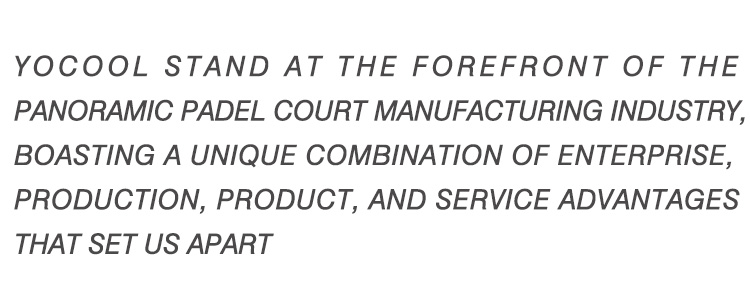

Understanding the Costs of Building a Padel Court A Guide for Suppliers
Padel, a paddle sport that has gained immense popularity worldwide, particularly in Europe and Latin America, presents a unique opportunity for suppliers and entrepreneurs in the sports and recreational industry. Building a padel court can be an excellent investment; however, understanding the costs involved is crucial for suppliers who wish to provide accurate quotes and designs. This article aims to outline the factors affecting the price of building a padel court and how suppliers can strategically approach prospective clients.
What is Padel?
Before diving into costs, it is essential to understand what padel is. The sport combines elements of tennis and squash, typically played in doubles on an enclosed court. The growing enthusiasm for padel has led to an increase in demand for courts, resulting in various suppliers and contractors entering the market.
Factors Influencing Padel Court Construction Costs
1. Court Size and Type The standard size for a padel court is approximately 20m x 10m. However, the cost may vary depending on whether you're constructing an indoor or outdoor court. Indoor courts generally incur higher construction fees due to additional requirements like lighting, ventilation, and climate control.
2. Materials Used The quality of materials plays a significant role in determining the overall cost. For instance, typical fencing is made of glass or mesh, while flooring options may include synthetic turf or wooden surfaces. Suppliers must choose cost-effective yet durable materials that comply with international standards.
3. Location The geographic location of the court greatly influences costs. Urban areas often have higher labor and material costs compared to rural settings. Additionally, regional regulations and permitting processes can impact both the timeline and expenses associated with construction.
4. Design Features Custom design features, such as lighting systems, seating arrangements, and even landscaping around the court, can significantly raise costs. While appealing designs may attract more players, suppliers must balance aesthetics and functionality to avoid inflating budgets unnecessarily.
5. Labor Costs The cost of skilled labor can vary widely. For instance, hiring specialized contractors experienced in sports facility construction might require a heavier investment, but this often results in higher quality and longer-lasting courts.

6. Additional Amenities Many suppliers recommend adding extra facilities, such as showers, changing rooms, and areas for refreshments. While these amenities can enhance the user experience and appeal to potential clients, suppliers need to calculate their impact on the total cost.
Estimating Overall Costs
On average, the cost to build a standard padel court can range anywhere from $30,000 to $100,000. This broad range accounts for variations in the factors mentioned above. For suppliers, it is essential to compile a detailed quote that includes materials, labor, design features, and any additional amenities to give potential clients a comprehensive understanding of the investment they are considering.
Pricing Strategies for Suppliers
To optimize competitiveness, suppliers should consider the following strategies
- Competitive Analysis Researching local competitors can provide insight into market rates, helping suppliers set a fair and attractive price point. - Value-Added Services Offering maintenance services or promotional packages can set suppliers apart, demonstrating commitment to client satisfaction and potentially leading to repeat business. - Financing Options Presenting financing options or partnerships with financial institutions can ease the burden of upfront costs for clients, making it easier for them to invest in a padel court.
- Quality Assurance By emphasizing the quality and durability of the materials and construction methods used, suppliers can justify premium prices. Communicating the long-term cost benefits of a genuinely durable court can alleviate concerns about higher initial expenditures.
Conclusion
As the demand for padel courts continues to grow, suppliers have a significant opportunity to establish a strong presence in this evolving market. By understanding the various factors that influence the cost of building padel courts and adopting effective pricing strategies, suppliers can appeal to potential clients while ensuring a profitable venture. The key lies in transparency, quality, and providing a clear value proposition to potential customers.
High-Performance Industrial Flooring Solutions China Paddle Tennis Court for Sale
High-Performance Industrial Flooring Solutions Durable & Cost-Effective
Homogeneous Transparent Floor – Durable & Stylish Rubber Floor Solutions
Premium Homogeneous Transparent Floor for Durable & Stylish Spaces Rubber Floor Solutions
Premium Sports Floor Solutions Durable PVC Sports Floor & Rubber Floor for Gyms
Durable Rubber Composite Floor Premium Rubber Floor & Mats Solutions